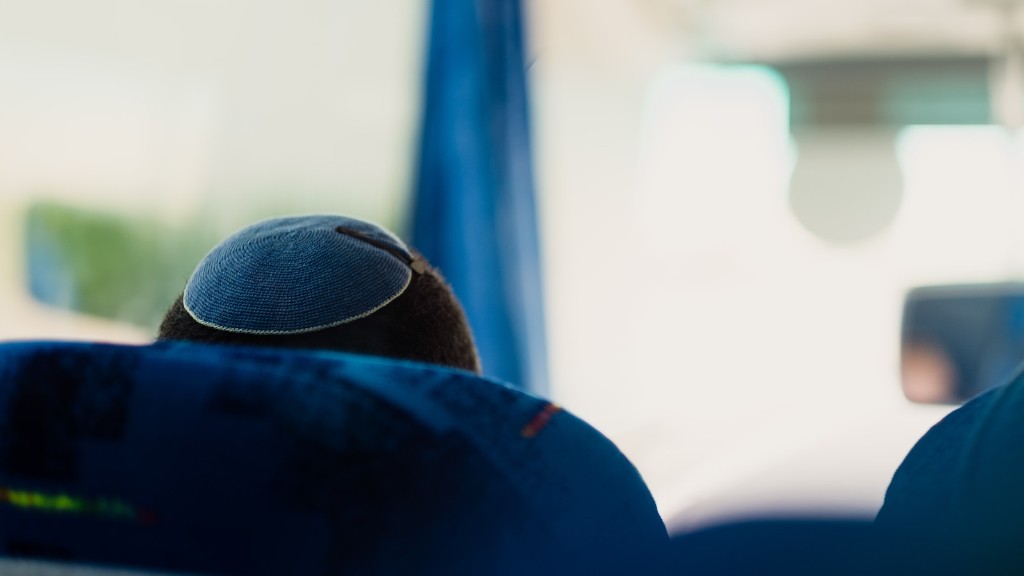Role of Women in Judaism
The role of women in Judaism has long been debated and studied. Since ancient times, the role of women – both religiously and in society – has been carefully defined and regulated by religious scripture and faith. Although the rules may have varied across the ages, one thing has remained the same: throughout the ages, women have had a special role within the faith.
In the Orthodox and Conservative branches of Judaism, the roles of men and women have been traditionally divided: men are seen to be responsible for religious practice, leading prayer services, and teaching Torah. On the other hand, women have been respected for their roles as mother,wife and homemaker.
In more modern times, however, the roles of women have begun to be viewed differently. Women have begun to take on leadership roles in religious congregations, including being competent to lead prayer services and teach Torah. This change has been driven by a combination of modern influences: the emancipation of women, social changes and the increasing openness of society. In some communities, the issue is still being discussed with the introduction of rabbinical roles for women.
The concept of gender roles in Judaism is complex and multifaceted. While there have been changes in recent years, traditional orthodox Jewish communities still follow the teachings of the Torah in which the gender roles are divided. The fundamental basis of the gender roles in Judaism can be found in Genesis 1:27: “God made man in His own image, after His likeness; He created them male and female”. The verse emphasizes the duality of creation and implies that the divine plan is for men and women to complement each other.
From its inception, there have been many roles attributed to women in Judaism. From receiving a divorce to giving blessings to their children, women have traditionally had a place in the Jewish tradition. They are seen as caretakers, providers and educators of their children and have an invaluable role in the religious and social life of their families.
In the home, women have traditionally been seen as the guardian of the household. This involves creating an environment of love and respect while also developing a balanced and kosher home. This includes the synagogue, where women have historically been responsible for providing the year-round kiddush, setting the table for Shabbat and more.
In addition to this, Jewish women have also been charged with educating their children. This includes teaching Torah, the stories and values of the Jewish faith, and leading by example. Women have a special role in education, and their importance in nurturing children’s faith and values cannot be overestimated.
Women in Leadership Positions
In recent times, women have played an ever-increasing role in Jewish leadership. This can be traced back to the dawn of modern Reform Judaism in the early 19th century, when many progressive approaches were taken in regards to the role of women in Judaism. This began with the introduction of women as members in Reform Synagogues, before gaining official positions of leadership in the 1970s.
Since then, women have increasingly taken on roles such as rabbis, cantors, and assistant rabbis. Recent years have also seen the rise of women in scholarship and Talmudic studies, and many women are now considered experts in their fields.
The most important advancement for women has been achieving parity in prayer services, allowing them equal participation as men. Jewish women have been instrumental in pushing for further acceptance in religious circles, and are increasingly accepted and respected in all levels of Orthodox, Conservative and Reform Judaism.
The trend towards a greater role for women in the clergy has been replicated in other parts of society. There has been a growing acceptance of women playing a role in politics, business, and other aspects of life where previously they might have been excluded. The equal representation of women in all life roles is seen by many progressive thinkers as a sign that the future will be brighter for women in Jewish life.
Women’s Rights
The struggle for full equality for women in religious life has been long and hard-fought. This began in the first wave of feminism in the late 18th and early 19th centuries, when the voices of change rose from Europe and the U.S. demanding the emancipation of women. This was followed by the second wave of the women’s liberation movement, which saw the creation of organizations and coalitions advocating for greater rights, opportunities and access for women.
In the Jewish world, the struggle for equality for women has been long and arduous. Women have led the way in advocating for equal access to synagogue life and equal representation in leadership roles. Both Reform and Conservative communities have made significant strides in recognizing the importance of the woman’s voice in religious discourse, while some factions within the Orthodox community have been reticent to change.
The trend towards full equality in Judaism is gathering momentum, however, and the future is looking brighter for women in Jewish life. Organizations such as Colette Guimont’s Jewish Women’s Spiritual March, a nationwide march in support of women in the leadership of secular and religious communities, have brought attention to the cause and helped pave the way for further progress.
Women and Halakha
Halakha – or Jewish Law – is a key component in defining the roles of men and women within Jewish life. Jewish Law is composed of a number of distinct areas which involve the behavior of individuals, communities and governments. The roles of men and women are specifically addressed in Halakha, although the interpretation of these roles may vary from one community to another.
In the Orthodox world, Halakha is seen as divine law and is the basis for many gender-related decisions. Within traditional Orthodoxy, the roles of men and women are sharply delineated and men are considered to be the spiritual authorities. On the other hand, in more modern interpretations of Halakha, there is a greater respect for the equal capabilities and rights of women.
The decision as to which interpretation of Halakha is to be adopted is often a heated subject of debate between various Jewish denominations. In the end, however, the fact remains that women’s roles in Judaism are changing and that the future promises greater levels of recognition and respect for women’s voices.
Women in the Literary Tradition
The traditional roles of men and women in Judaism have been a constant theme in literature. From the Bible to the present-day, authors have been drawing attention to the often disparate roles of men and women within Jewish communities.
The Bible includes many examples of women having a unique role in Jewish life. From Sarah, who was seen to have equal authority with Abraham in Genesis, to Deborah, the great judge who was responsible for establishing justice in the land of Israel, the Jewish tradition is full of examples of women in influential leadership roles.
In more recent fiction, authors such as Chaim Potok and Eliezer Wiesel have also depicted the role of women in their books. In classics such as The Chosen and Night, both authors bring to the forefront the realities of a traditional Jewish life, where gender roles play an important part.
Women in the Arts
Jewish women have made a significant impact in the artistic sphere. Over the centuries, countless women have been active in the arts, from painters and sculptors to dancess and entertainers.
In the world of Jewish music, women singers have been at the forefront of the scene for many years. Ofra Haza was an Israeli singer who was an iconic figure in the Israeli music scene of the 80s, while more contemporary artists such as Sara Bareilles are bringing Jewish music to the forefront.
In literature, women authors have been central to the development of Jewish literature. Authors such as Anzia Yezierska, who wrote Hunger in 1910, and Tova Mirvis, author of The Ladies Auxiliary, are two prominent examples of women in literature.
In visual arts, women have been highly influential. Marc Chagall, a celebrated 20th-century artist, includes many female figures in his work, while contemporary Jewish artist Tamar Aviv’s work has been praised for its open and bold approach to Jewish life and culture.
Conclusion
The role of women in Judaism has been a contentious subject for centuries. While the traditional roles of women may have been narrowly defined in the past, we are now seeing a greater recognition of the importance of women’s voices in all facets of Jewish life. Women are taking on more leadership roles and taking their rightful place in the synagogue, the home and the world. As a result, their roles and influence in Jewish life are becoming more prominent and their importance more widely accepted.

